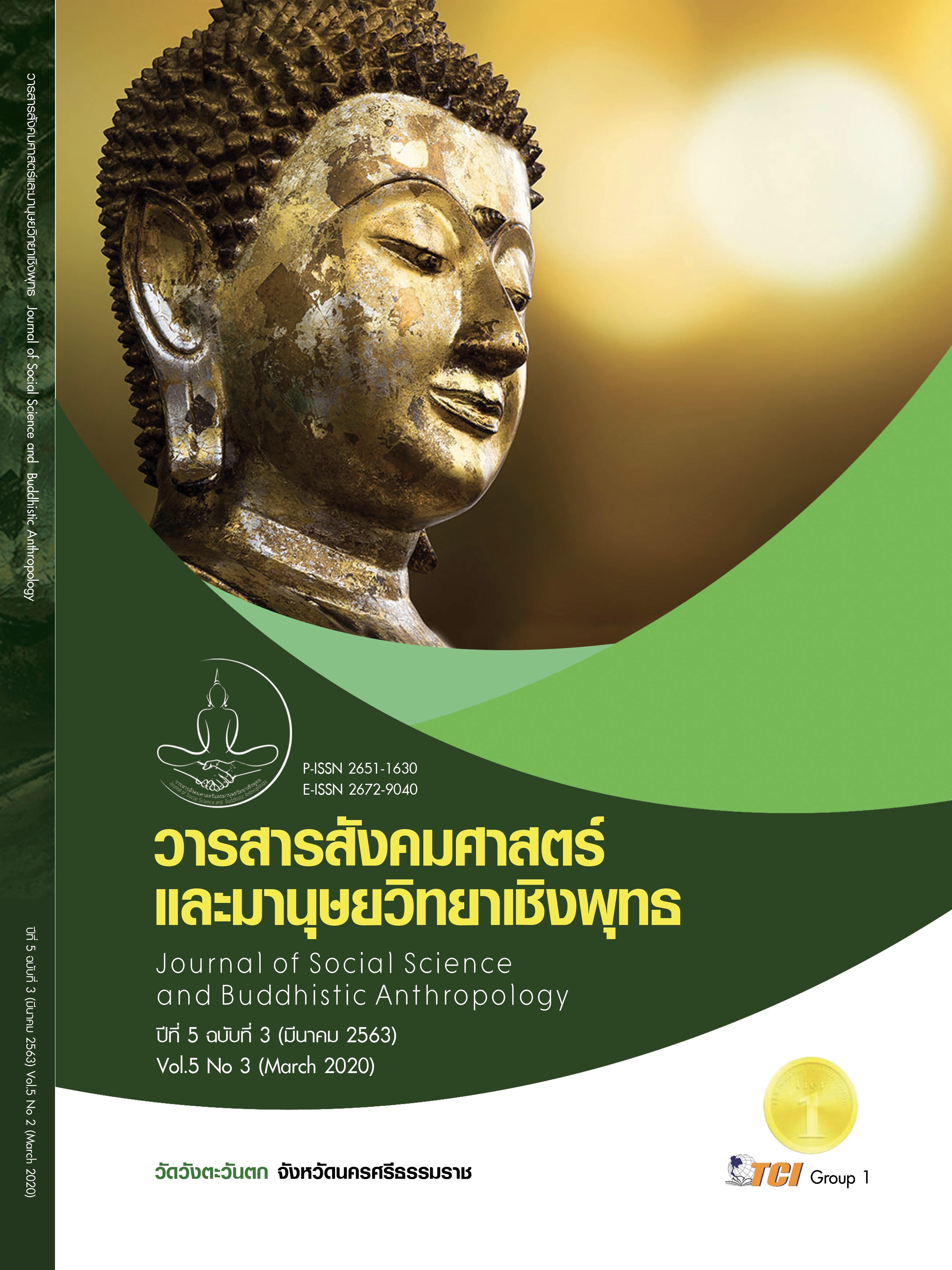The THE ANTARABHAVA OF MAHAYANA AND VAJRAYANA BUDDHISM: AN ANALYTICAL STUDY BASED ON THE CONCEPT OF VINNANA IN MAHAYANA AND VAJRAYANA BUDDHISM
Keywords:
Antarabhava, Mahayana Buddhism, Vajrayana Buddhism, VinnanaAbstract
This Research is a Qualitative Research entitled “The Antarabhava of Mahayana and Vajarayana Buddhism: an analytical study based on the concept of vinnana in Mahayana and Vajrayana Buddhism”, has three objectives: 1) To study the concept of Antarabhava in Mahayana Buddhism. 2) To study the concept of Antarabhava in Vajrayana Buddhism. 3) To analyze the concept of Antarabhava in Mahayana and Vajrayana Buddhism. From the research, it is found that Antarabhava is often understood as the intermediate existence in which the being is dead from the present life but has not yet taken the new birth in the next life. Such a belief was descended by Mahayana Buddhism of Sabbatthikavada or Saravasativada through Sanskrit language, there appears the concept of Antarabhava through the concept of Alayavinnana whereby the concept of Bodhicitta or Tathagatagabba has been developed in Mahayana Cittabhutatathavada, which is absolutely. Once mixed by the doctrine of tantra prevailing over Tibetan land, Vajarayana or Tibetan Buddhism then arises. The concept of Antarabhava or Bardo in Tibetan language has been changed from original one that during the death rebirth is not caused yet where the period of time is explained from the birth to death, the duration in Antarabhava and duration of rebirth in the next world, these continue as the circle of life. The concept of Vinnana in Vajrayana, there are two stand out aspects, called by the Tibetans Sem and Rigpa, the first is the Ordinary Mind, the second is the very Nature of Vinnana, its innermost essence, which is absolutely and always untouched by change or death, at the moment of death will bring about the pure light and move to Antarabhava before getting rebirth. Therefore the concept of Vinnana in Mahayana and Vajrayana are different from Theravada, which is conducted all the time, arises shifts in continuity. Insistently, the concept of Antarabhava or Bardo that is an intermediate state, after death and before rebirth duration.
References
ทะไลลามะ. (2559). ปรัชญาปารมิตาหฤทัยสูตรและอรรถกถา. แปลโดย นัยนา นาควัชระ. กรุงเทพมหานคร: หจก. สามลดา.
พระพุทธโฆสเถระ. (2548). คัมภีร์วิสุทธิมรรค. แปลโดย สมเด็จพระพุฒาจารย์ (อาจ อาสภมหาเถระ). (พิมพ์ครั้งที่ 6). กรุงเทพมหานคร: บริษัท ธนาเพรส จำกัด.
พระไพศาล วิสาโล. (2556). ชีวิตและความตายในสังคมสมัยใหม่. (พิมพ์ครั้งที่ 2). กรุงเทพมหานคร : เครือข่ายชาวพุทธเพื่อพระพุทธศาสนาและสังคมไทย.
พระมหาสมจินต์ สมฺมาปญฺโญ. (2543). พระพุทธศาสนามหายานในอินเดียพัฒนาการและสารัตถธรรม. กรุงเทพมหานคร: โรงพิมพ์มหาจุฬาลงกรณราชวิทยาลัย.
มหาจุฬาลงกรณราชวิทยาลัย. (2539). พระไตรปิฎกฉบับภาษาไทย ฉบับมหาจุฬาลงกรณราชวิทยาลัย. กรุงเทพมหานคร: โรงพิมพ์มหาจุฬาลงกรณราชวิทยาลัย.
__________. (2560). อรรถกถา พระอภิธรรมปิฎก ฉบับมหาจุฬาอรรถกถา. กรุงเทพมหานคร: โรงพิมพ์มหาจุฬาลงกรณราชวิทยาลัย.
ราม วชิราวุธ. (2545). ประวัติต้นรัชกาลที่ 6. กรุงเทพมหานคร: บริษัท พริ้นติ้งเซ็นเตอร์ จำกัด.
วัชระ งามจิตรเจริญ. (2550). แนวความคิดเรื่องอันตรภพในพระพุทธศาสนาเถรวาท. ใน รายงานวิจัย. มหาวิทยาลัยธรรมศาสตร์.
เสถียร โพธินันทะ. (2543). ประวัติศาสตร์พระพุทธศาสนา. (พิมพ์ครั้งที่ 4). กรุงเทพมหานคร: โรงพิมพ์มหามกุฎราชวิทยาลัย.
__________. (2555). ปรัชญามหายาน. (พิมพ์ครั้งที่ 6). นครปฐม: โรงพิมพ์มหามกุฎราชวิทยาลัย.
แสง จันทร์งาม. (2535). ตายแล้วเกิด. กรุงเทพมหานคร: พรศิวาการพิมพ์.
Alex Wayman. (2002). Buddhist Insight. India: Motilal Banarsidass.
Asvaghosha. (1967). The Awakening of Faith, tr. by Yoshito S. Hakeda. New York : Columbia University Press.
Hiraka Akira. (1998). A History of Indian Buddhism from Sakyamuni to Early Mahayana. tr. by Paul Groner. Delhi: Banarsidass.








